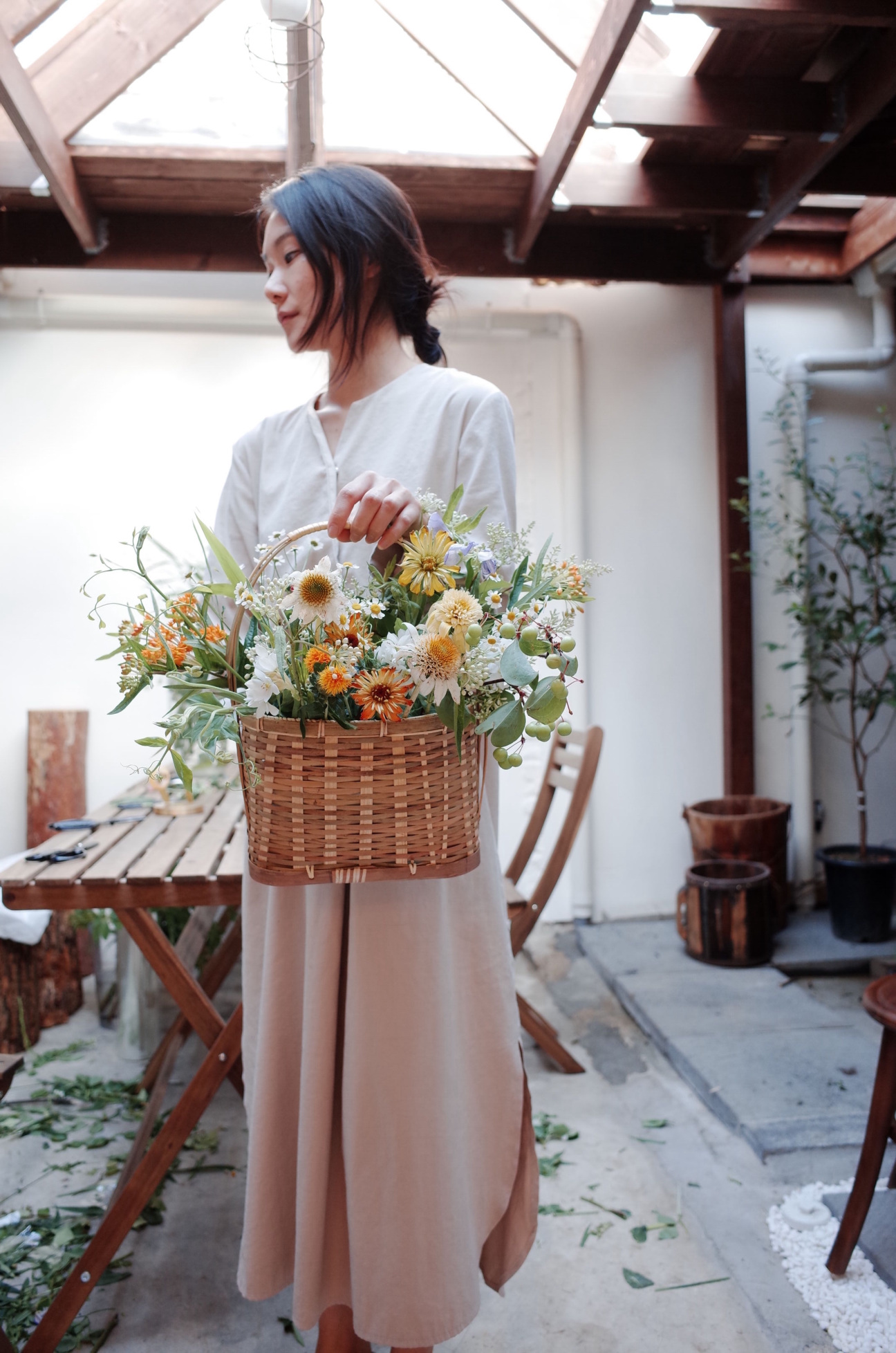
A tornado rendered in flowers. A roof blossoming with purple florets. A floral landscape flipped upside down. To call Sun-ah Shin a florist is a serious understatement. The product of hours of physical labor, her lyrical installations defy gravity and conceal complex technical infrastructures. Shin, who runs the flower studio Chungrokhwa and studied spatial design in college, hides behind this modest title. The humble creative's design philosophy is one of deference for, in particular, the small wildflowers that sprout all around us. In pointing to the “many, many people” who help make the studio’s floral designs stand out, Shin shows reverence for those quietly working with her behind the scenes.
Most recently, Shin has been working as a set designer for K-Pop music videos, creating stunning visual backdrops for the international superstars. Even in these high-octane spaces, however, she retains a focused composure that allows her to quickly adapt to unexpected challenges with humor and grace. Shin spoke to CULTURED about how she designs to conjure feelings, and what it’s like working with some of the Korean music scene's biggest names.
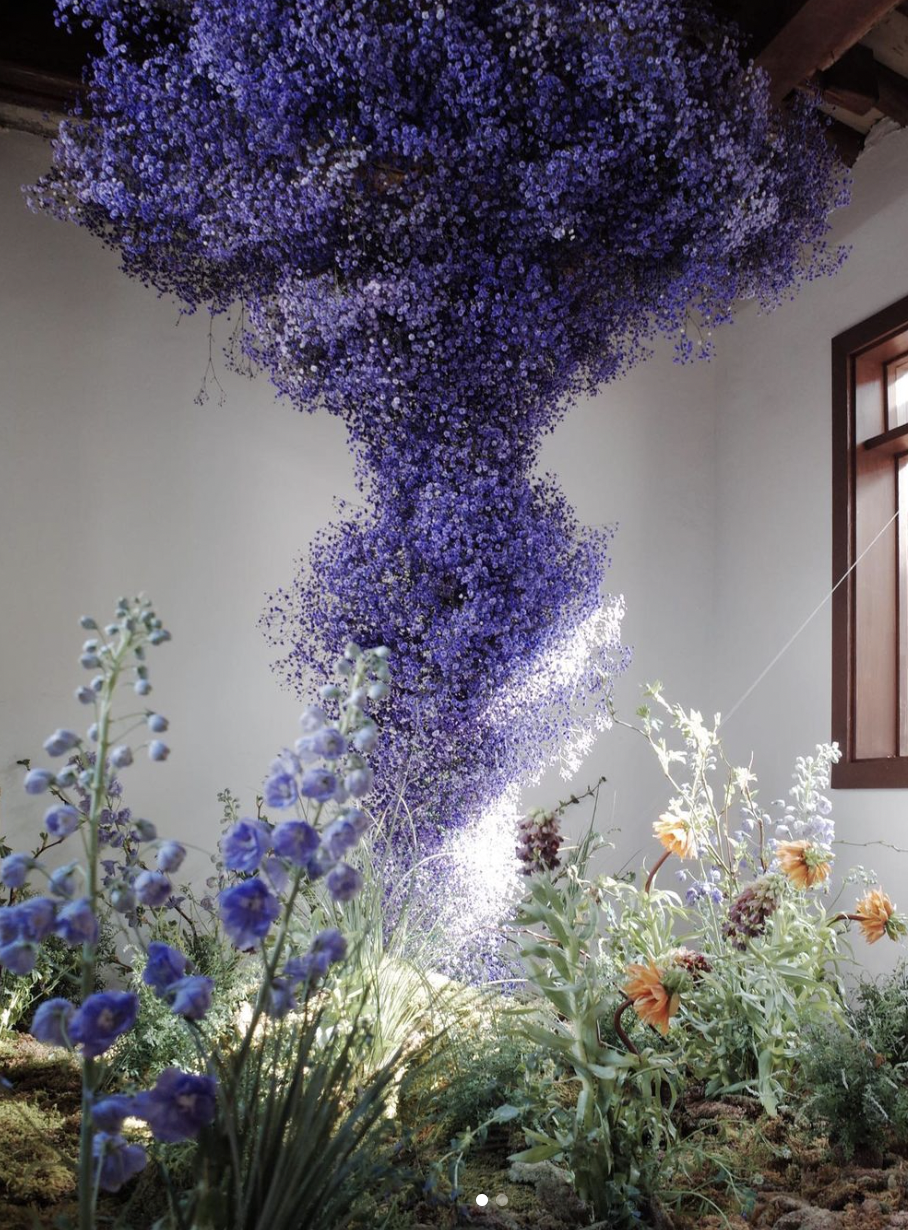
CULTURED: Can you tell us about the meaning of the studio’s name, Chungrokhwa?
Sun-Ah Shin: The term "Chungrokpa" came to be when three Naturalist poets, Cho Chi-hun, Pak Mok-wol, and Pak Tu-jin, released a poetry collection titled Chungrok Jip. These three poets were called "the Chungrokpa." They aspired to write work that makes use of the Korean language to express nature’s spirit and humanity’s purity. Inspired by this, I took Chungrokpa and switched out the “pa” to “hwa,” [which denotes “flower” in hanja] creating the name Chungrokhwa.
CULTURED: How would you describe your flower-arranging style?
Shin: I try to avoid the use of overly extravagant flowers that are used in the West for various decorations, instead preferring natural materials that we can ordinarily see, and out of affection for wildflowers that quietly stand their ground. In preserving the beauty of negative spaces and curves, I seek to arrange flowers that have a humble and simple feel, rather than an overbearing one.
CULTURED: Are there any flower arranging rules you never break? What about ones you bend from time to time?
Shin: When I first started in floristry, I incorporated fruit that complemented the flowers well. It wasn’t a rule, but many people forget that flowers wither to become fruits. I put in fruits hoping to alleviate any disappointment when the flowers eventually wither, but in my work nowadays, there are more projects that require me to focus on the heads of flowers as a structural starting point. In these cases, I think I stray away from this rule.
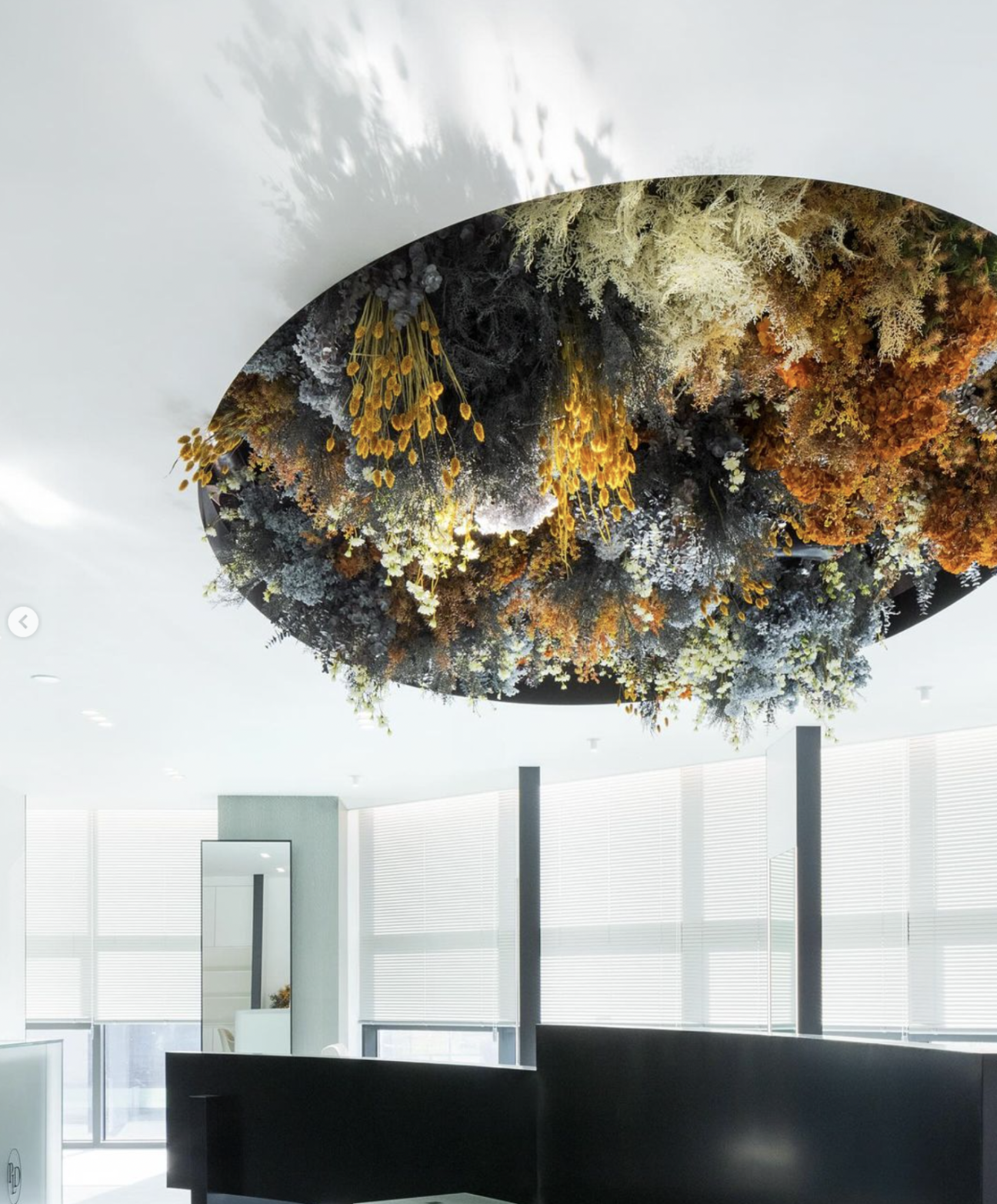
CULTURED: What does a typical day-in-the-life look like for you? Do you listen to music while working—if so, what is your go-to album or song?
Shin: These days, since my marriage, I do a lot of housework after coming home from work. When doing housework, I listen to a lot of music. To do housework after an intense day of work, I listen to upbeat K-Pop songs. Otherwise, I listen to a singer whose song I’ll be working on. Sometimes it will remind me of things for projects I previously missed.
CULTURED: Your work has a lot in common with art installations, with its sculptural ingenuity, often featuring wooden supports or invisible strings. You have a background in spatial and interior design, which seems to play a large role in your approach to floristry. How have these experiences informed the way you work?
Shin: If you major in spatial design, the most realistically helpful skill is being able to read floor plans. If you can read the floor plan while working, you can understand the installation process a little faster, and the ideation stage moves faster. No matter how good an idea is, if you can’t implement it in space it will be impossible to install.
Also, when I arrange flowers in a space, I’m not simply making an object to put down, but focusing on setting a scene. In the end, the goal of art is to evoke a certain feeling, so if I’m able to set a scene that fits the space, I think that’s a more rewarding way to evoke such unspoken feelings.
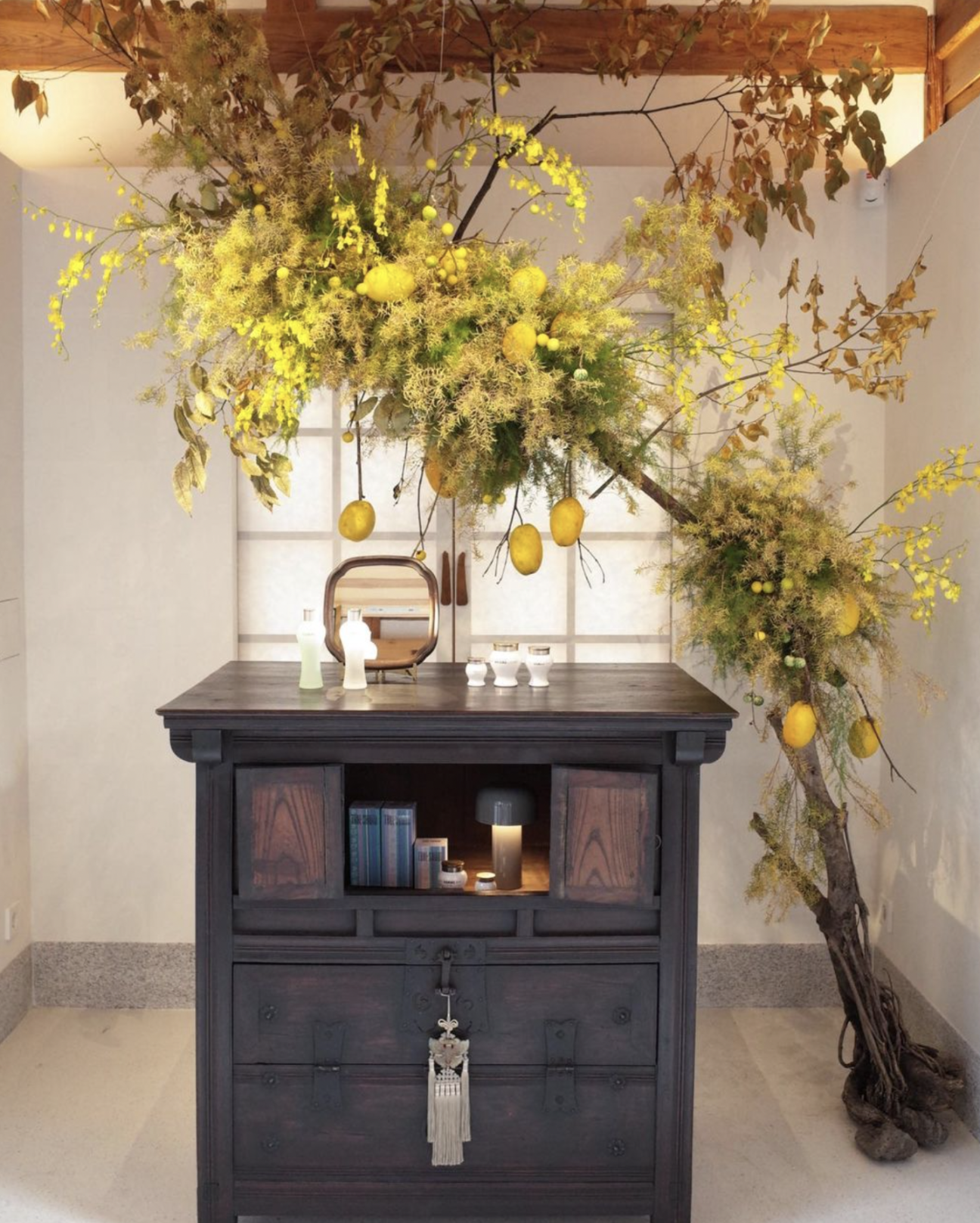
CULTURED: Can you tell us more about your path to becoming a florist?
Shin: I don't think there's a clear path to becoming a florist… I don't think the path I followed is the answer either. Many people who start floristry for the first time ask these questions. If I must answer—learning hard, practicing hard, and working hard on your work. I would say that’s it. If you practice what you learn and make it your own, there will be people who appreciate your flower-arranging style. As you work on things one by one, you will naturally want to do better and study, research, and continue to feel yourself grow.
CULTURED: You’ve created flower arrangements for some of the biggest names in K-Pop—including BTS, Seventeen, and Red Velvet. Most recently, you designed the flower arrangements for Red Velvet’s “Cosmic” music video, featuring a Midsommar-esque maypole teeming with flowers. What is it like working with these stars?
Shin: For that video scene, I installed flowers and ribbons on a seven-meter-tall wooden pole. The scene where the singers and dancers wear flower crowns and dance the choreography around that area was the most important scene, so we produced flower crowns to match our own heads. But on set when they tried them on, their faces were too small so everything appeared sizes too big.
We had to alter them, but as the artists requested more flowers, they could fluently name the flowers. How well they know about flowers, I thought. I was intrigued and worked cheerfully, brightened by the fact that they appreciated flowers. That way, as the artists added more, each to their own taste, I saw that the crowns became more stunning than the ones I initially imagined. I was overjoyed with pride.
CULTURED: What are some memorable behind-the-scenes moments?
Shin: In the music video shoot for Jimin, from BTS, there were many extras of various ages—children, elders, grandpas, grandmas. Even as Jimin was busy singing and dancing and camera testing, it was so heartwarming to see that he constantly sparked conversation with the kids and adults and taking care of them.
Also, during the shoot, we covered the entire set floor with small hills and fake grass so it was very uncomfortable and dangerous to wear dress shoes. But he never once complained and even with unending takes, even as he slipped, I remember everyone feeling awestruck at the sight of him not once frowning and dancing extremely hard, and thinking he’s truly amazing. I kept thinking, It’s not everyone who can be a singer.
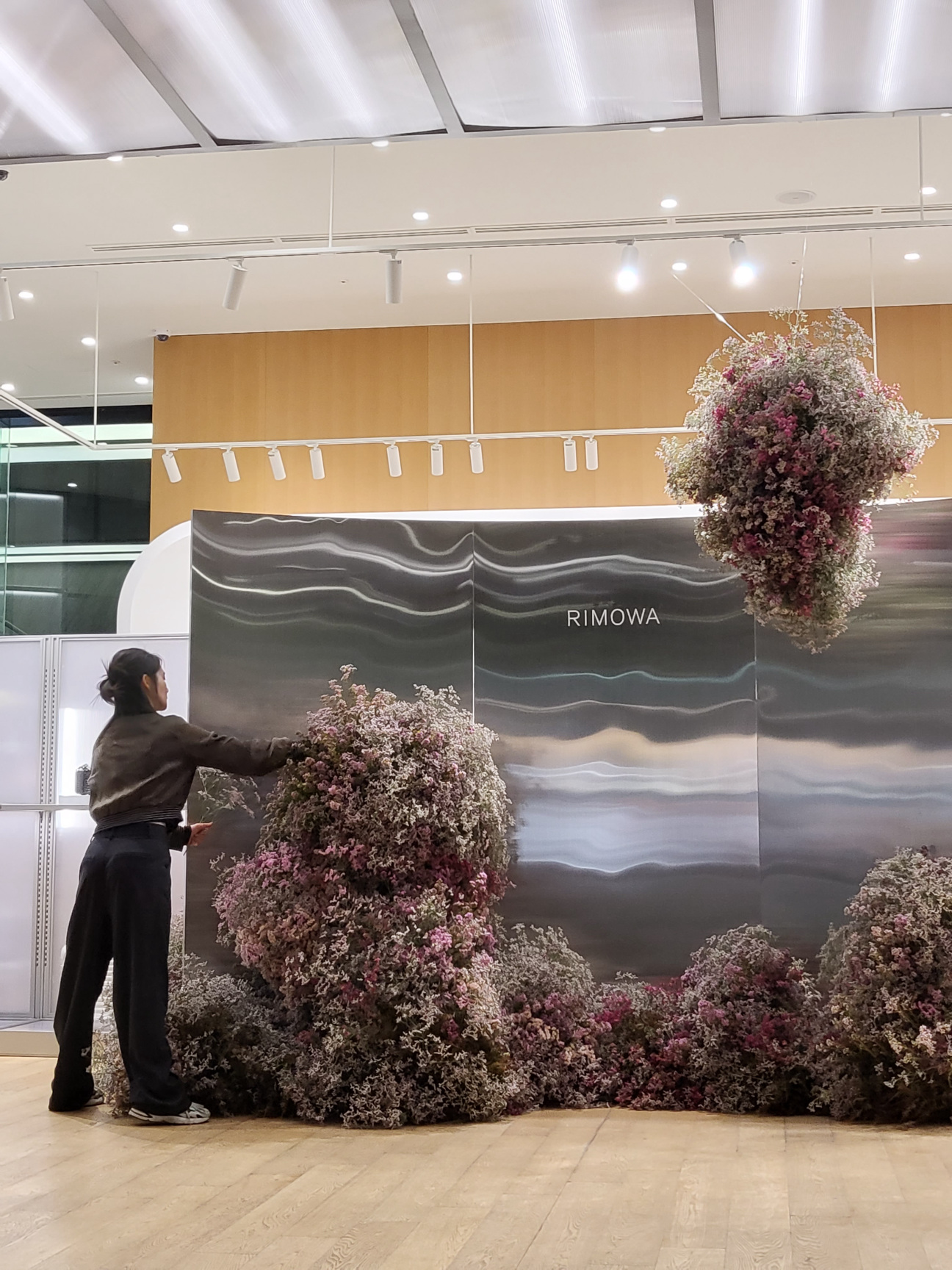
CULTURED: Do you find that commissions like these push your work in unexpected directions? It seems your tastes and personal style come through even in large-scale commercial projects such that they’re recognizable as Chungrokhwa. How do you maintain a sense of your artistic vision in these situations?
Shin: First of all, I think people who generally like the style of my work seek me out. I’ve never been stressed by that aspect, and if I receive a request for varying styles I haven’t tried before, I think I readily attempt to match my work to that style. Having done a lot of projects that use a single color or single material in the past, that kind of work became my signature. A single color or material is frequently used when we want to reveal aspects of large shapes or structures. Thinking these possess metaphorical implications, I tend to pursue them a lot.
CULTURED: What is an unexpected place where your work has made an appearance?
Shin: This summer, I installed flowers at Seoul Memorial Park. At first, when they said it was a memorial park, I ruminated on what kind of concept to devise. When it comes to a memorial park, I could only think as far as a flower bouquet, much less a large installation piece. But they said not be too heavy-hearted, and that flowers can provide, at least for a moment, temporary relief to sadness. So, in the middle of the park I made, with an assortment of yellow and white flowers, a tornado connecting floor to ceiling. It was a form that feels like it’s disappearing. It was an unexpected project for me, and a project I still think about a lot.
CULTURED: How do you typically bounce back from “uh-oh” moments?
Shin: I think there’s no other solution for those "uh-oh!" moments during work than simply trying to improve. You have to move with your body. That mindset comes first. If something isn't going well, or if something doesn't come out the way you thought it would, then you have to act. That's the only way to move forward.
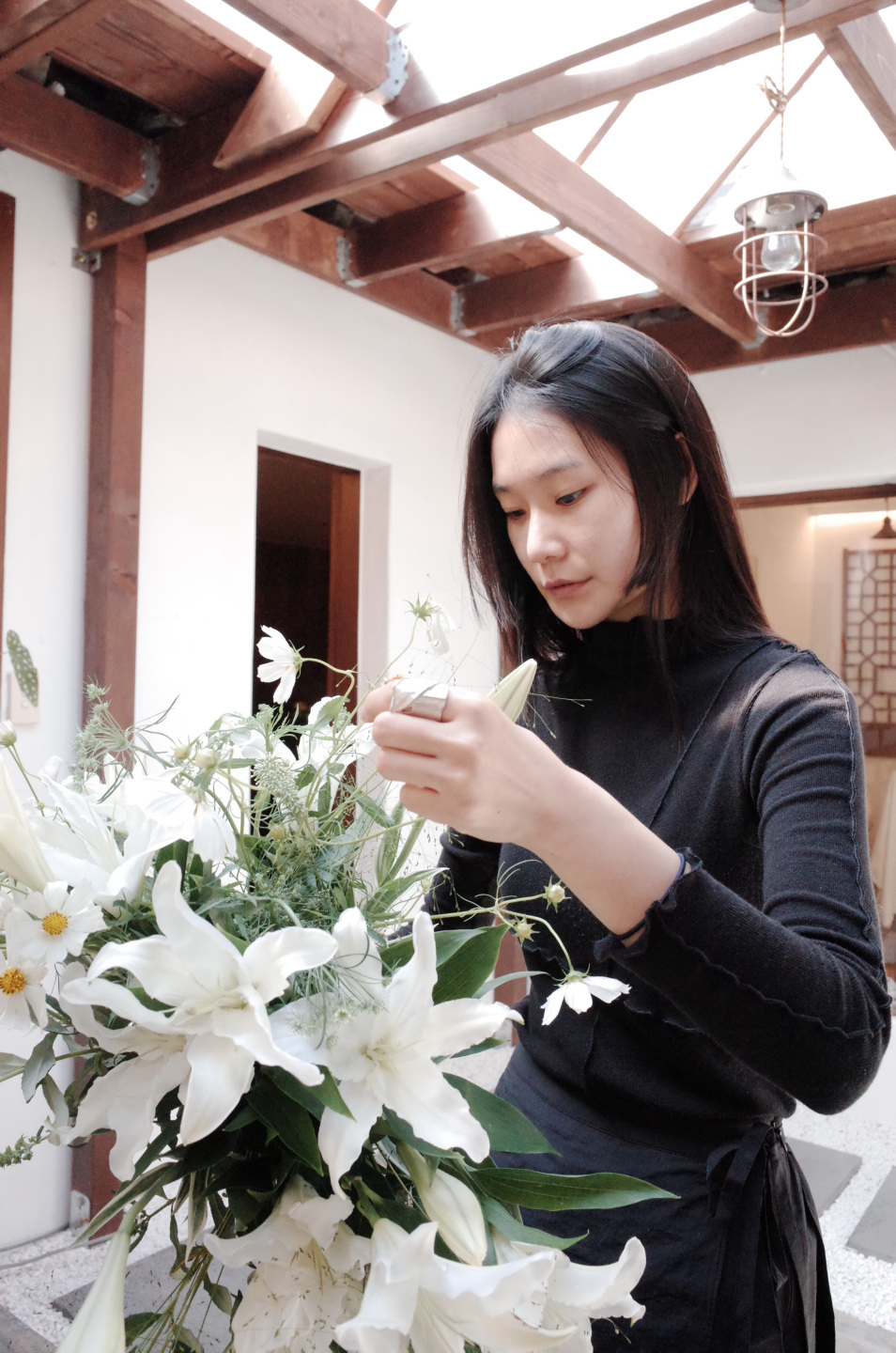
CULTURED: Your previous studio was in a hanok, a traditional Korean house. You filled the interiors with beautifully curated knick-knacks from Korean markets and antique pieces. What inspires your taste outside of floristry? Where do you shop in Korea?
Shin: On my days off, I like going to Gyeongbokgung Palace for walks. It is the place that gives me the most inspiration. I actually even did a Gyeongbokgung Palace project. I also like going to Bukchon or Seochon. I think I get a lot of ideas and inspiration visiting places where ancient traditions and modernity coexist.
To buy antiques, I go to Pungmul Market or Dongmyo. Through the Internet, I visit and buy from antique bidding sites that are like auctions. Antiques are not something I can buy right away just because I want to buy them. That's their big attraction. When I find what I want, it becomes as precious as the time spent waiting for it.
CULTURED: Do you have any flower-arranging tips for our readers? Any flowers to look out for these days?
Shin: Use a lot of seasonal flowers. Extravagant flowers are nice too, but I want to say that even small flowers blooming around us are enough to make floral arrangements. These days, why don’t we pay attention to the Dong-baek [Camellia] flowers that will soon bloom. It’s named “Dong-baek” [“dong” means “winter” and “baek” means “arborvitae tree”] because it blooms in the winter. When red and white colored flowers bloom, you can feel their tenacity.
CULTURED: What do you wish people knew more about the job of a florist, or about Chungrokhwa?
Shin: Even if the florist looks lavish and sophisticated from the outside, looking behind that image reveals the efforts of many, many people working hard to make the flowers stand out and the space for the flowers stand out. I would like people to keep that in mind.










 in your life?
in your life?

